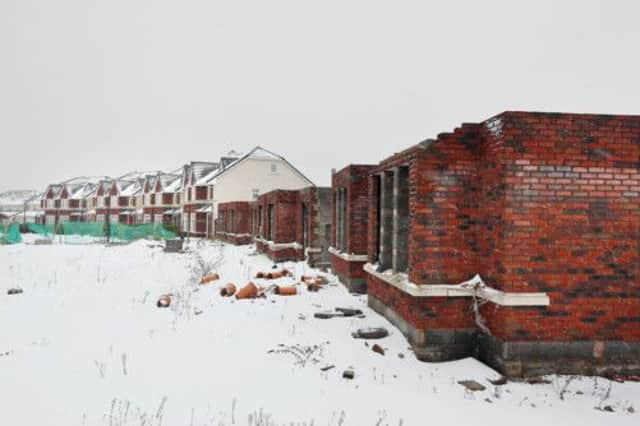Irish ghost estates face demolition on safety grounds


The Irish government yesterday said that it has identified around 40 “candidate estates” for demolition next year.
“Some of these unfinished estates are in places where there’s no demand for houses,” said Irish finance minister Michael Noonan.
Advertisement
Hide AdAdvertisement
Hide Ad“So there’s no point in having half-built houses standing there as a monument to the skeleton of the Celtic tiger.
“In [the] interests of safety, they should be knocked down.”
Concerns about the safety of such estates mounted after a toddler drowned in a pool of water in an unfinished estate in the Irish Midlands in 2012.
The problem of so-called ghost estates is particularly extreme in rural areas in the west and the Midlands – the number of houses in sparsely populated counties of Longford, Cavan, Roscommon and Leitrim increased by a remarkable 50 per cent between 2002 and 2009.
Many of these properties now lie vacant on desolate, unoccupied estates far from employment opportunities.
The latest inventory of unfinished estates provided by local authorities in Ireland found around 1,300 in the country. This compares with 1,770 a year ago.
They have been in contact with banks involved to discuss the viability of the each estate. They will now be looked at on a case-by-case basis to decide what the best course of action is, including demolition.
Most of the estates being considered for demolition are in remote areas, and in very early stages of construction.
Advertisement
Hide AdAdvertisement
Hide AdIn many cases, there are no completed units and only the foundations were set before construction work was abandoned.
“The vast majority of these estates are only at the stage where foundations are laid or groundworks carried out. We are looking to return them to green field status,” a spokesman for Ireland’s department of the environment said.
He added that the locations could not be identified until the owners had decided whether to complete them or bulldoze the existing work.
The Irish government previously established a fund of €10 million (£8.3m) to provide facilities in estates where most of the houses have been occupied.
The government hopes that the provision of basic service will persuade developers to finish off the houses.
An expert in regional and spatial analysis, Professor Rob Kitchin, of the National University of Maynooth, said the developers would be unlikely to pay the demolition bill, even if pressed.
“Obviously the developers are probably bust, which is one of the reasons why they’ve not finished [the estates],” he said.
“They have a lack of access to finance… they can’t go to the bank looking for money to finish these off.
Advertisement
Hide AdAdvertisement
Hide Ad“It will probably be the state and the local authority that steps in and will pay for the cost of demolition.”
A report due to be published by the department of environment next week is expected to provide further detail on the planned demolition.